1lumen selects and reviews products personally. We may earn affiliate commissions through our links, which help support our testing.
Nightwatch NSX4 review
Table of contents
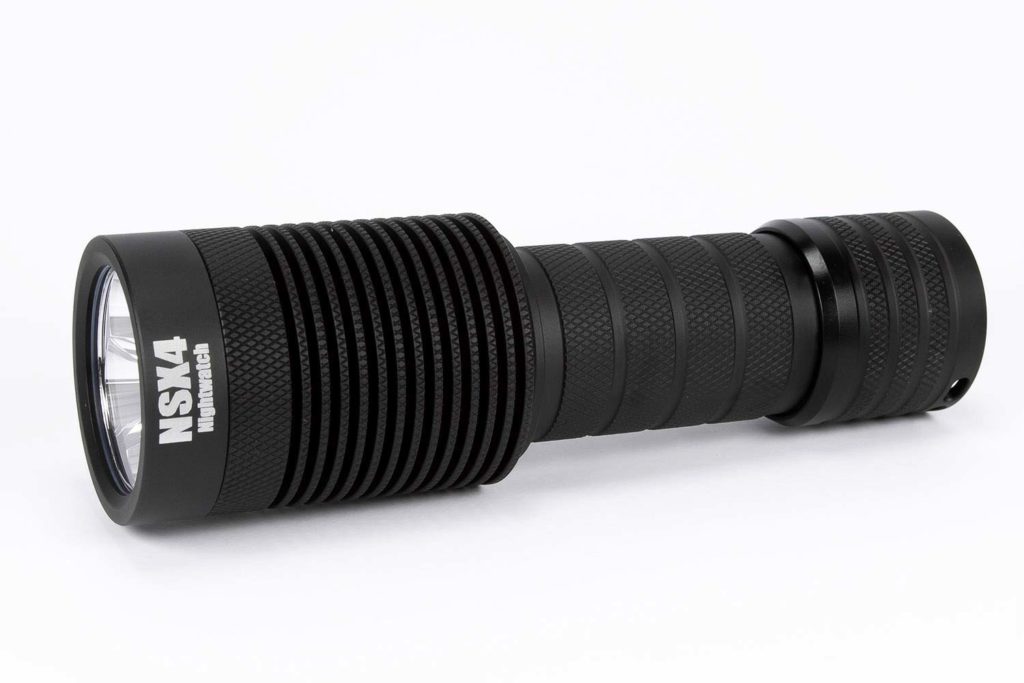
Specifications
| Brand/model | Nightwatch NSX4 |
|---|---|
| LED | 4* SST-40 6500K |
| Lumens | 8,700 Lumens |
| Beam intensity | 53,500 cd |
| Battery config. | 1*26800 or 1*21700 with adapter |
| Material | Aluminum |
| Modes | 5 |
| Blinkies | Strobe |
| Reflector | Smooth quad reflector |
| Waterproof | N/A |
| Review date | October 2020 |
INTRODUCTION:
Today I’m taking a look at the Nightwatch NSX4, and this is a light that has given me some pause.
I’ve actually not come across Nightwatch too much before – I was aware of the NSX3, and my initial impressions of that were along the lines of “tons of light, big fins”. The NSX4 ratchets that up with four emitters vs 3 in the NSX3 (I’m sure you can see the naming convention trend here…), as well as a change to an odd cell size – the 26800.
Wait – what?
Yep, this 7000mAh cell appears to be something that’s come from over the horizon somewhere, and is now the cell du jour for Nightwatch. Grab a 26650, stretch it a bit, and you’re on the right track.
Does this cell do wonders for the light? Read on, and find out!
Package quality.
The NSX4 I received was packaged inside a white cardboard box, reminiscent of my experiences with Convoy lights (albeit bigger). Inside, I found:
- The NSX4
- Inside, the 26800 cell that it is optionally available with
- A adapter to use a 21700 cell in the light
I also received a charger that I haven’t come across before – the YONii C2000. This is to charge the 26800 cell, as that cell size most definitely does not fit into any other charger I have.
There’s no manual or any other accessories – this light is here to do one thing; light everything up.
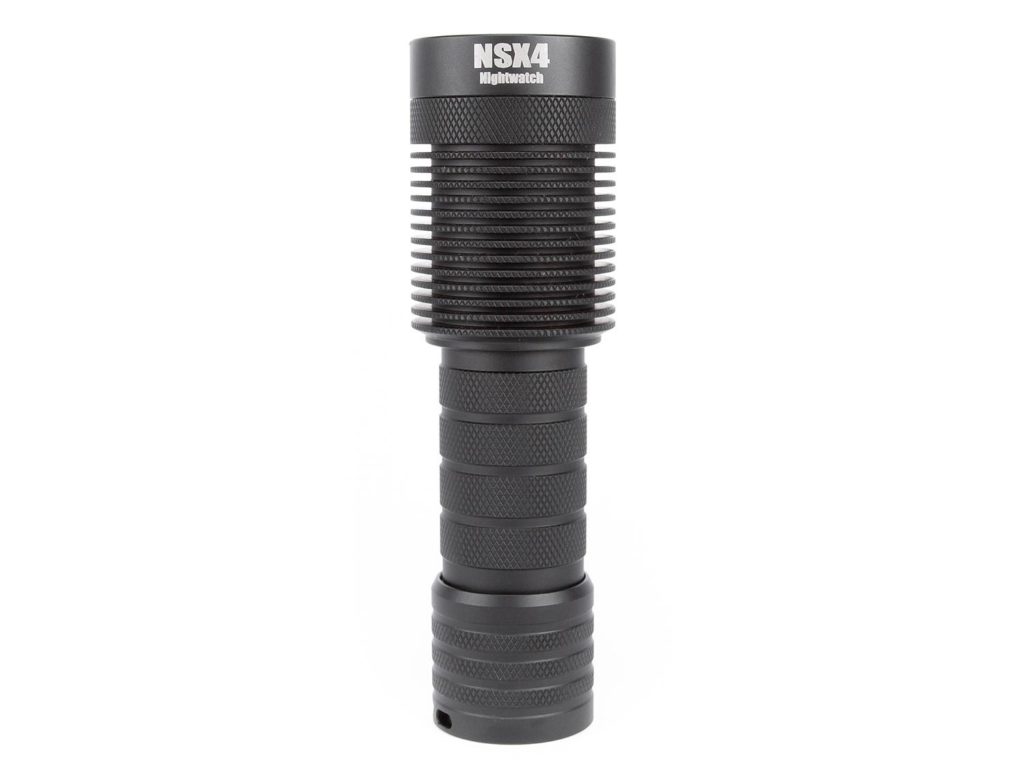
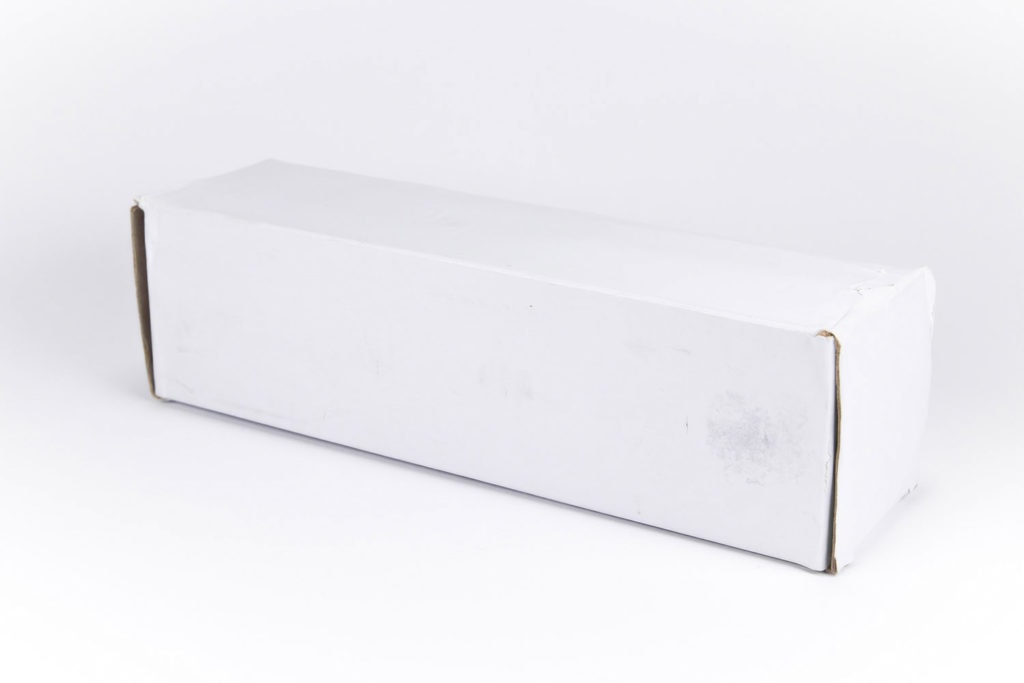

Handling of the light
The thing that immediately came to mind when I first saw this light – and I think for others too – is that it looks an awful lot like a Stielhandgranate from World War 1. I’d hold it differently though, in an underhand grip; I also don’t think I’d be throwing it any time soon.
There’s nothing subtle about this light, and I mean that in the best of ways. It’s a bludgeon of design and manufacture, aimed at one thing – getting the most light out of the front as possible, for as long as possible.
The tail switch is a reverse clicky, although I found it to be very touchy. The difference between a tap/half-press and a full activation to turn the light off is very small, and it has taken me some time to get the movement down to get it right most of the time.
This thing is round. Really round. You put it down on its side, and it’s going for a roll; the knurling on the heat sinking fins aren’t going to grip onto a surface much, so the best option is to either use something to brace it, or put it down head-down, as that’ll provide the most stable base.
There’s two holes in the tailcap for a lanyard, but that’s all the additional “holding” methods you’ll get. There’s probably clips and holsters out there that are compatible, but none are included, nor suggested.
There were almost no accessories in the box, but that’s fine. Included was a 21700 to 26800 adapter cap, and it works exactly as it needs to. As a point of difference though, most adapters I’ve come across in the past have gone on the positive terminal; this adapter goes on the negative terminal. The ‘outside’ connector is slightly concave, which sits very neatly with the tail spring.
Tailstanding: Absolutely. There’s no cut-outs around the tailswitch, so it stands very easily.
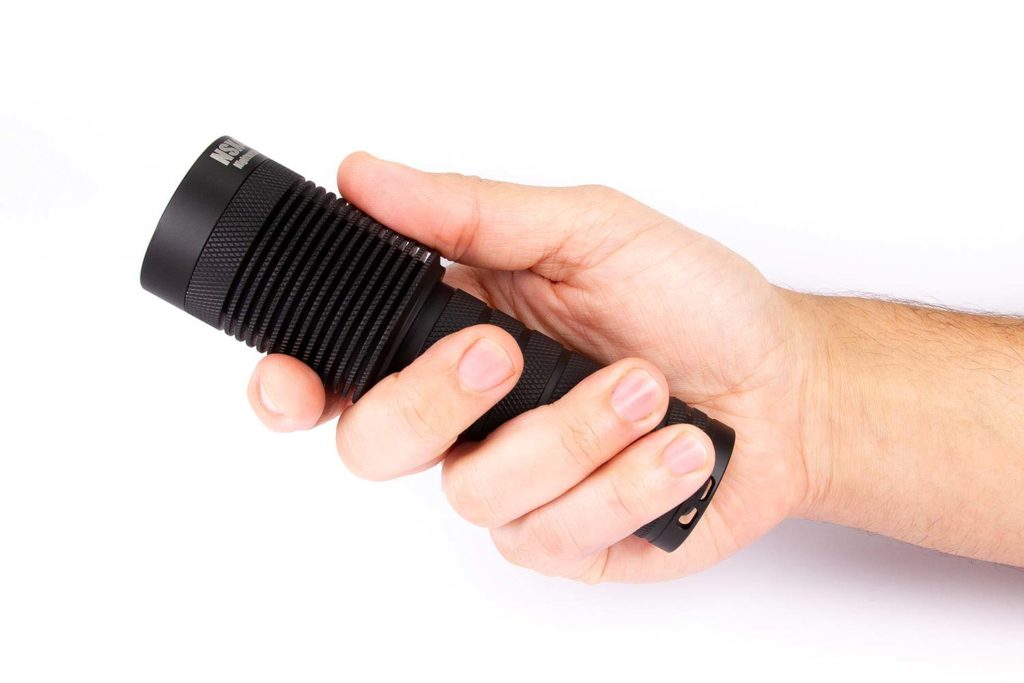
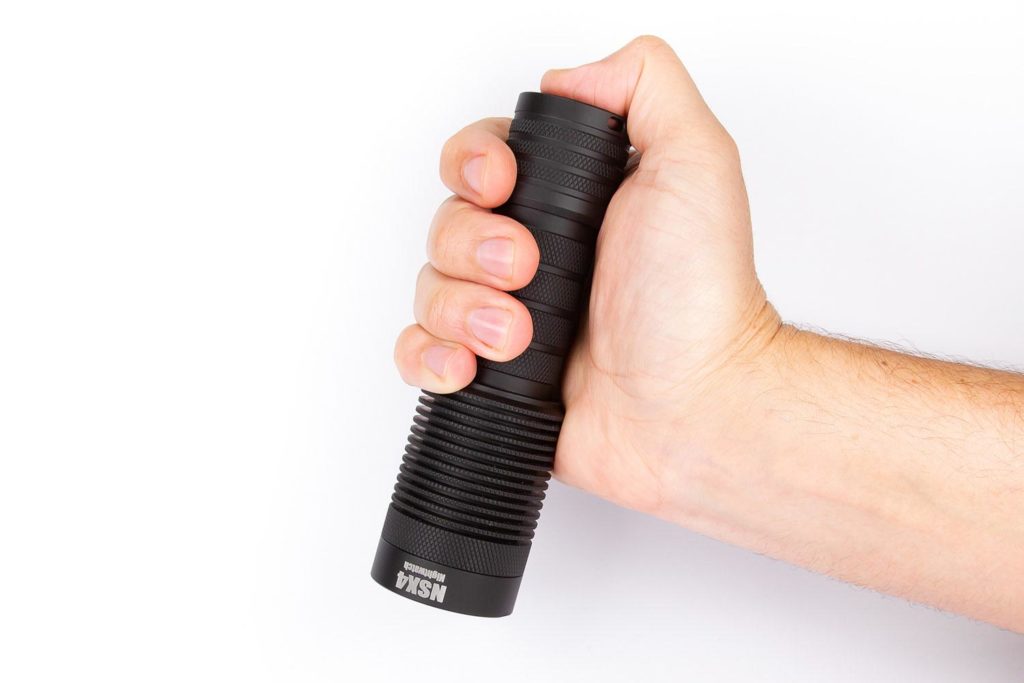
Build Quality, Knurling, Threads, and anodization
This has to be one of the most solid lights I’ve picked up. It’s just thick aluminium everywhere, and with a cell in it, quite a formidable weight. I feel moderately comfortable that if I were to hit something with this, said thing would incur a decent amount of damage.
The o-rings on the light are at either end of the body tube, and are quite generous – they protrude past the tube in a way that makes tightening the tailcap and head a bit more effort than I initially expected, but not much more. It’s a feeling that makes me confident of its water ingress rating.
The knurling on the light is at least 50% of the external surface area; from below the head, it’s effectively knurling until the body tube starts, then four thick bands, a raise to the tailcap, then three thinner bands. It’s not overly aggressive, but is enough to stick the light in the hand solidly. A nice touch is that the heat sinking fans are knurled too; I wouldn’t be surprised if the entire head was knurled, and then the fins cut out by lathe afterwards. I could probably take some photos and draw some lines on them to confirm, but to my eye, it appears very close if not exactly in line.
The threads on the NSX4 appear to be only very lightly lubricated; if you have some lubricating grease, I’d recommend putting some on when you get the light to be sure.
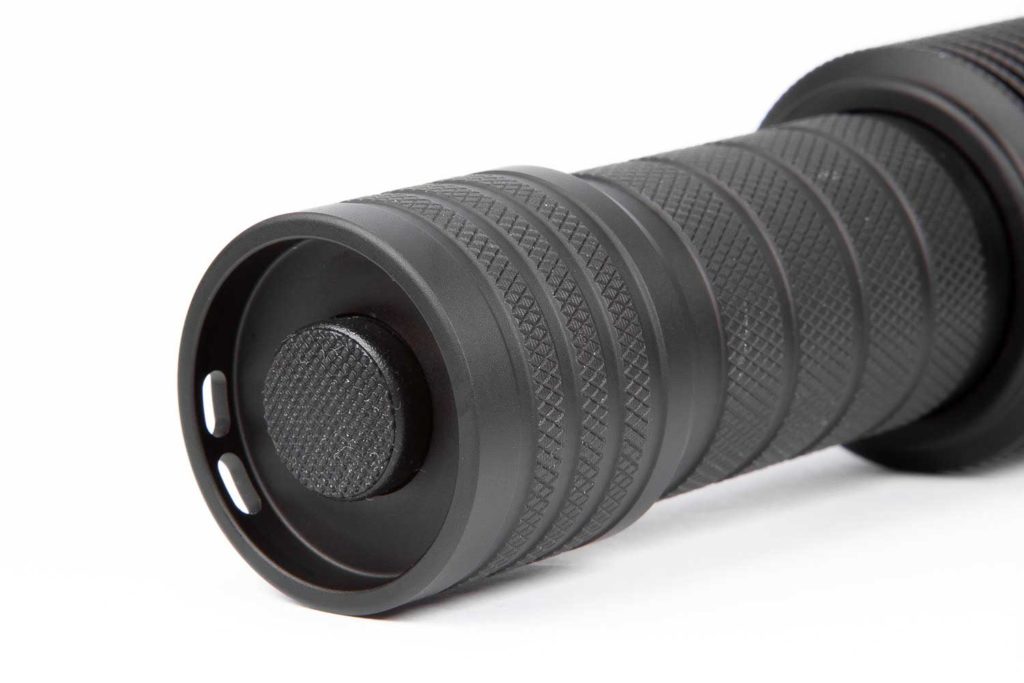
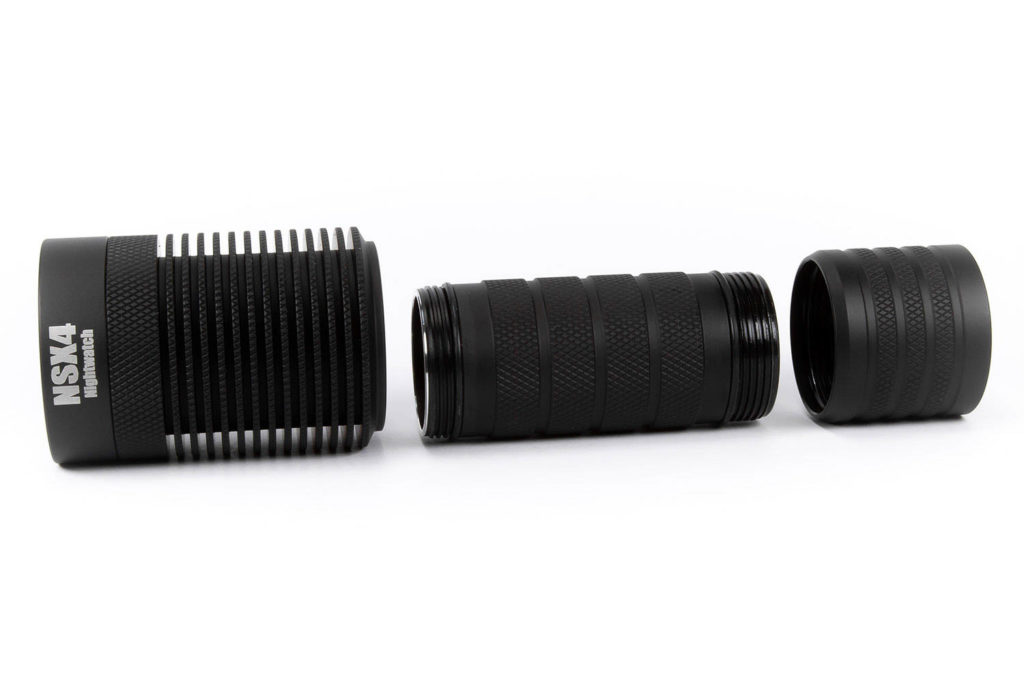
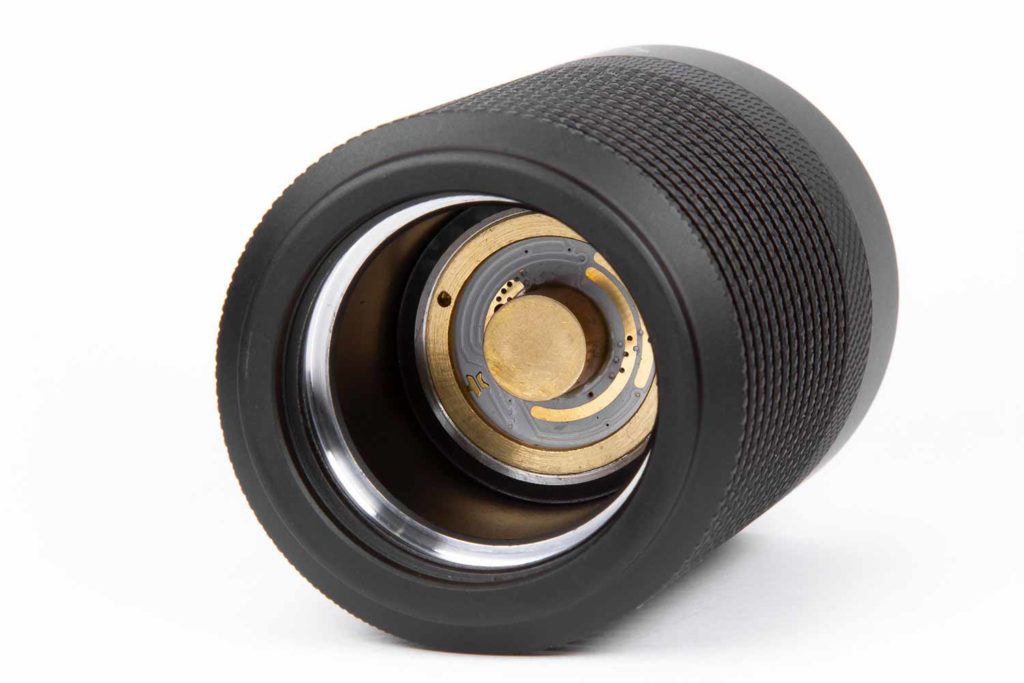
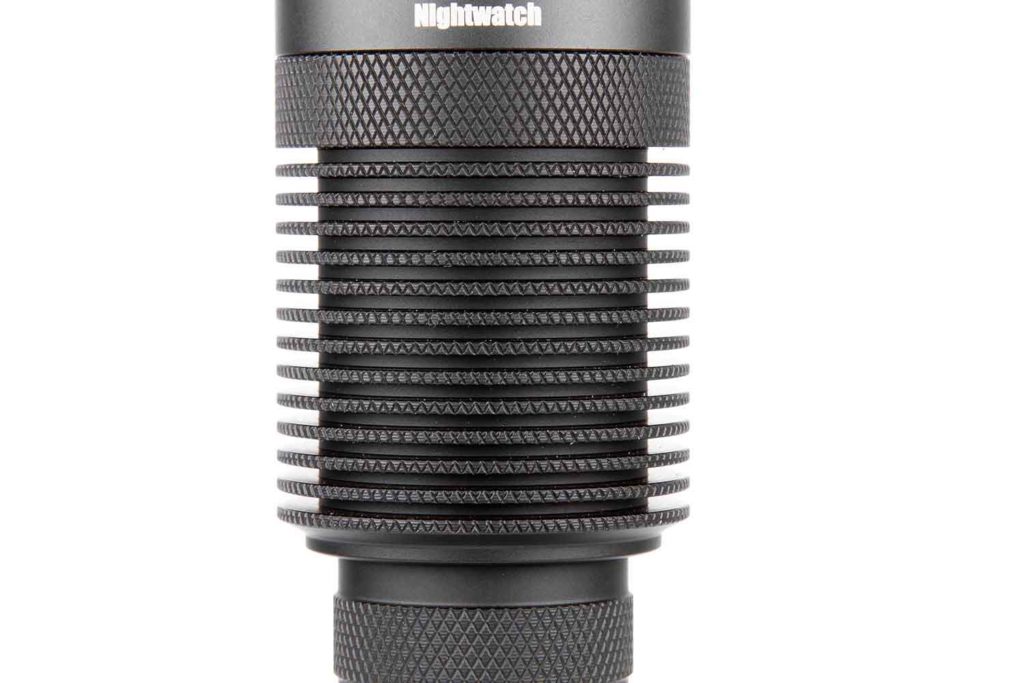
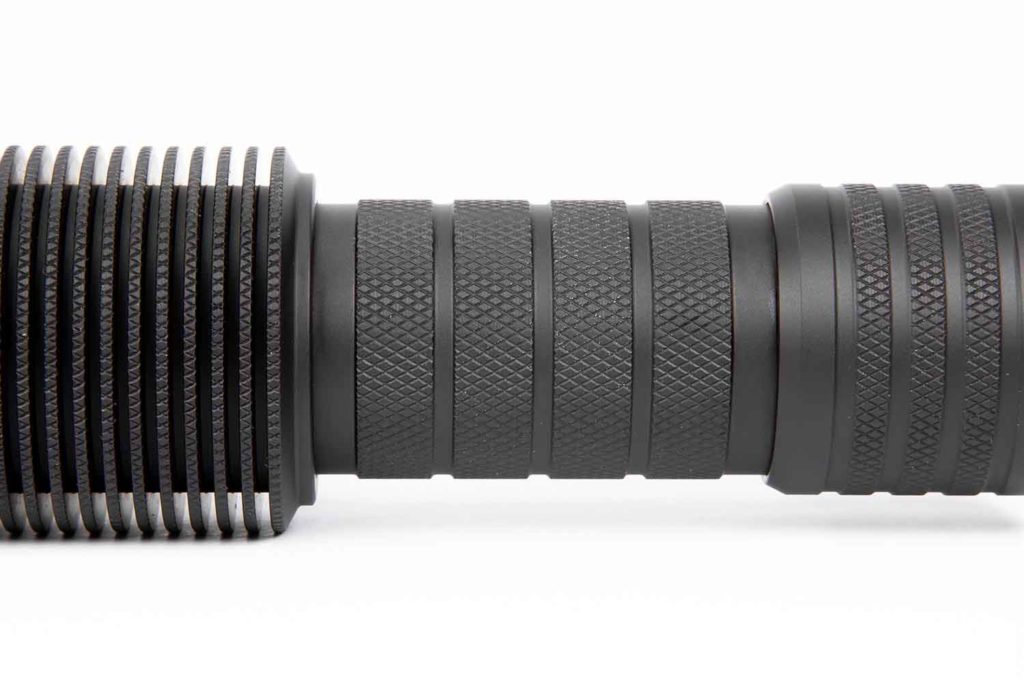
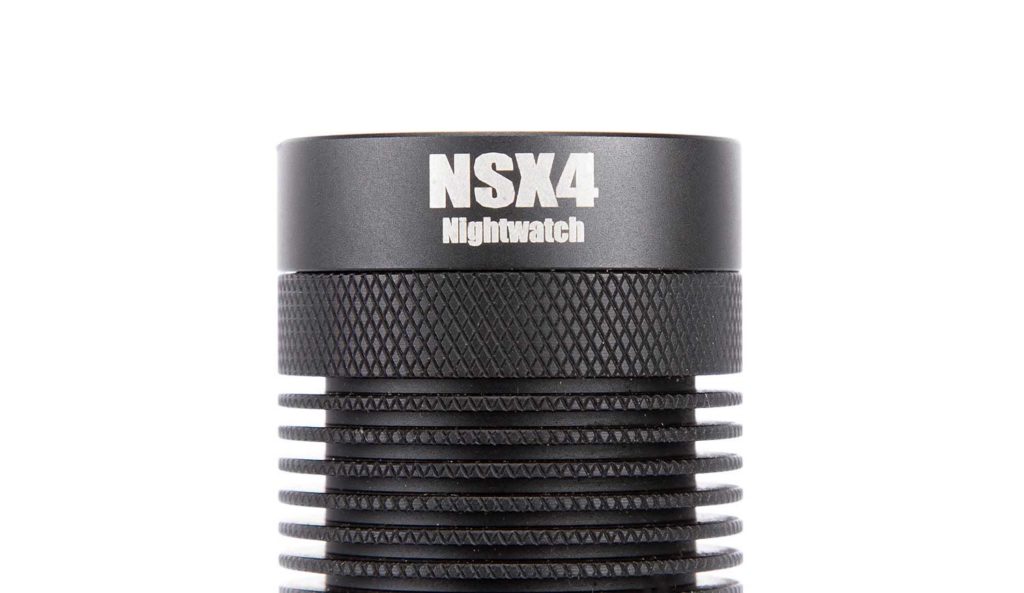
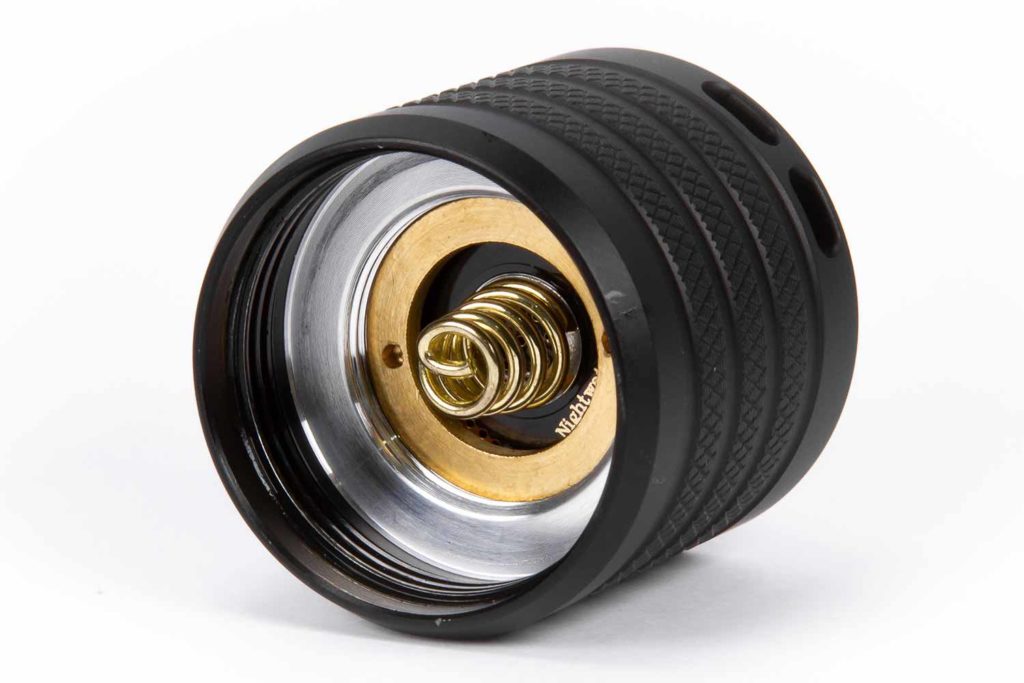
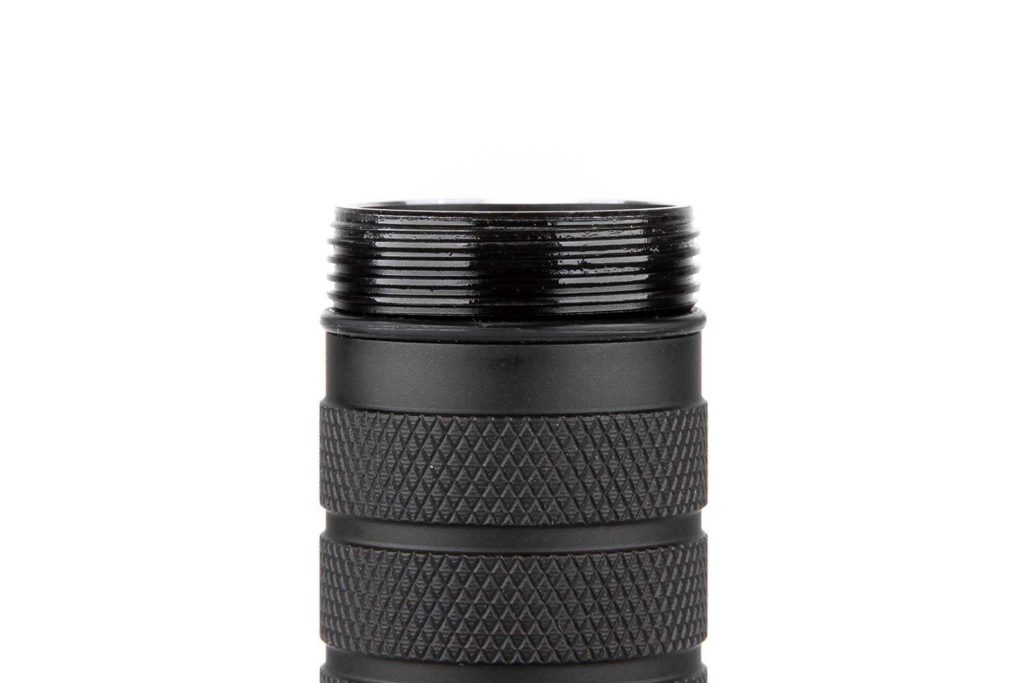
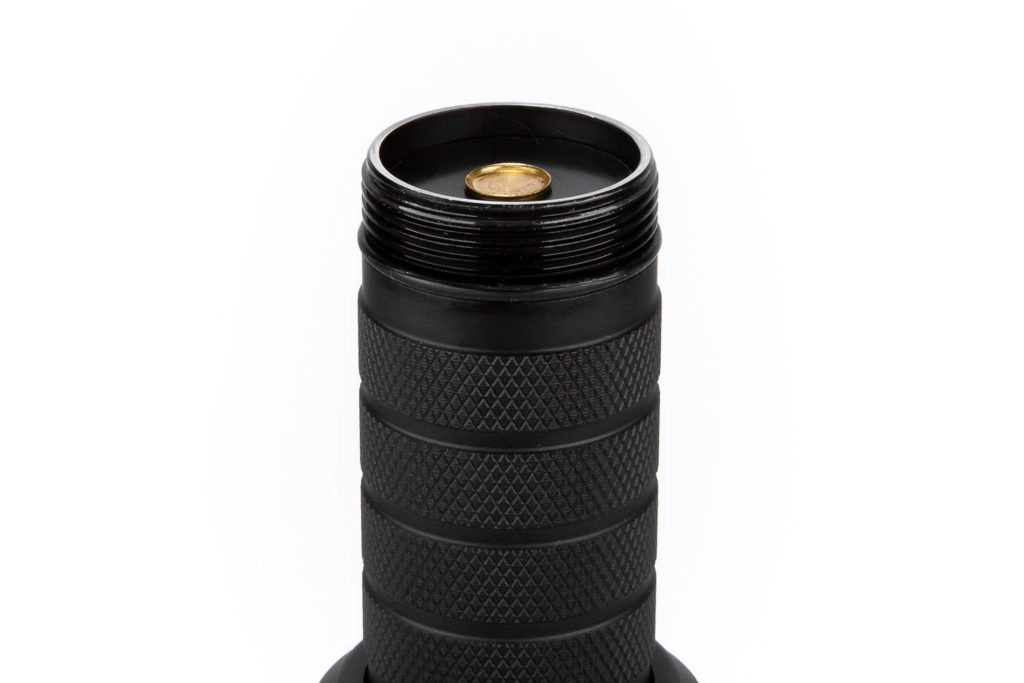
LED, LENS, BEZEL, AND REFLECTOR
The NSX4 can be obtained with two different emitters – the SST40, or the XHP50.2 3V. I have the version with the SST40 – it has a lower overall lumen output, but higher candela.
Both options only come in one CCT – 6500K. This is not a light for finesse or a nice cozy beam; this is for shoving the most light out as possible, which is perfectly fine in a single-cell hotrod like this.
There’s a smooth custom quad reflector; it’s not particularly deep, which means it’s going to be more of a flooder than a thrower, but being a quad, that was always a given.
A smooth bezel all the way around tops off the head of the light, silk-screened with branding, and a HOT warning that’s accurate, though after some time!
The beam has a solid hotspot and considerable spill, as is expected from a multi-emitter reflector, with a nice “petal” effect around the edges. This is similar to that seen in the Convoy S12, albeit with four petals instead of three.
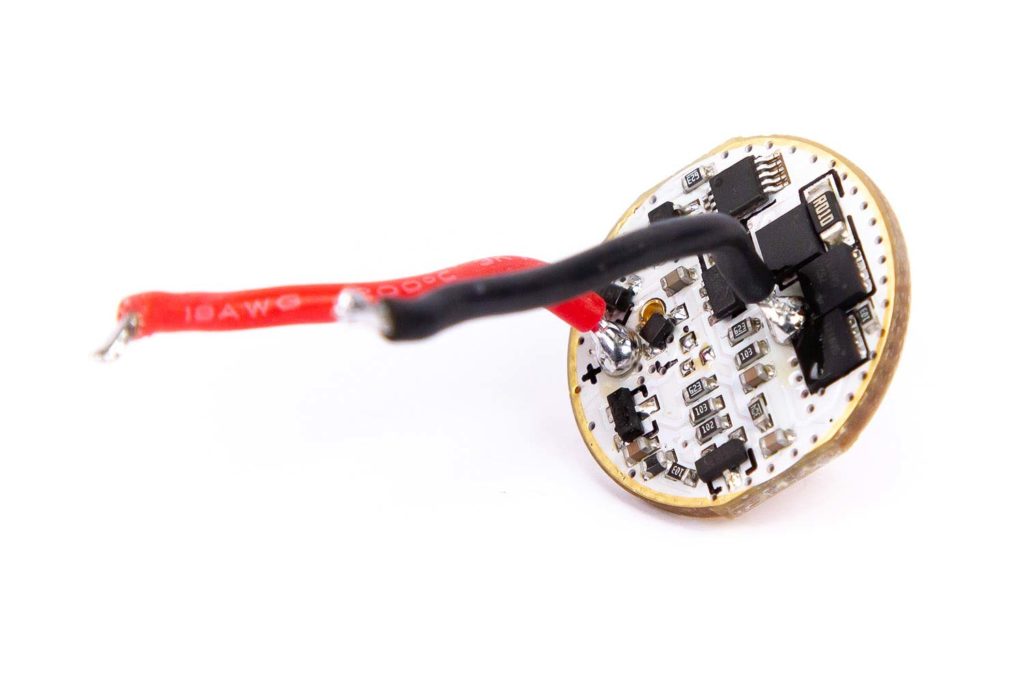
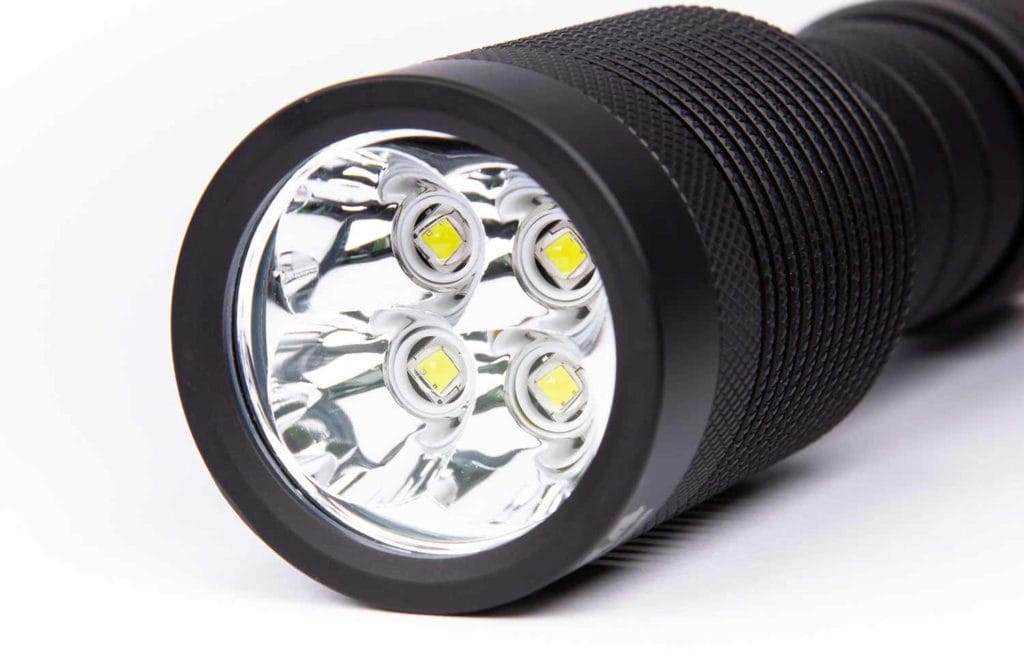
Dimensions
- Length: 148 mm / 5.83 inches
- Head diameter: 44mm (1.73 inches)
- Body diameter: 32mm (1.26 inches)
Weight:
- Empty: 237g (8.36 oz)
- With included 26800: 353g (12.45 oz)
- With Samsung 30T and adapter: 319g (11.25 oz)
It’s a hefty light!
High Power Flashlights
Size compared to other high-power flashlights.
Image 1: from left to right Nightwatch NSX4, Imalent MS06
Image 2: from left to right: Sofirn BLF SP36BLF , Nightwatch NSX4, BLF Q8.
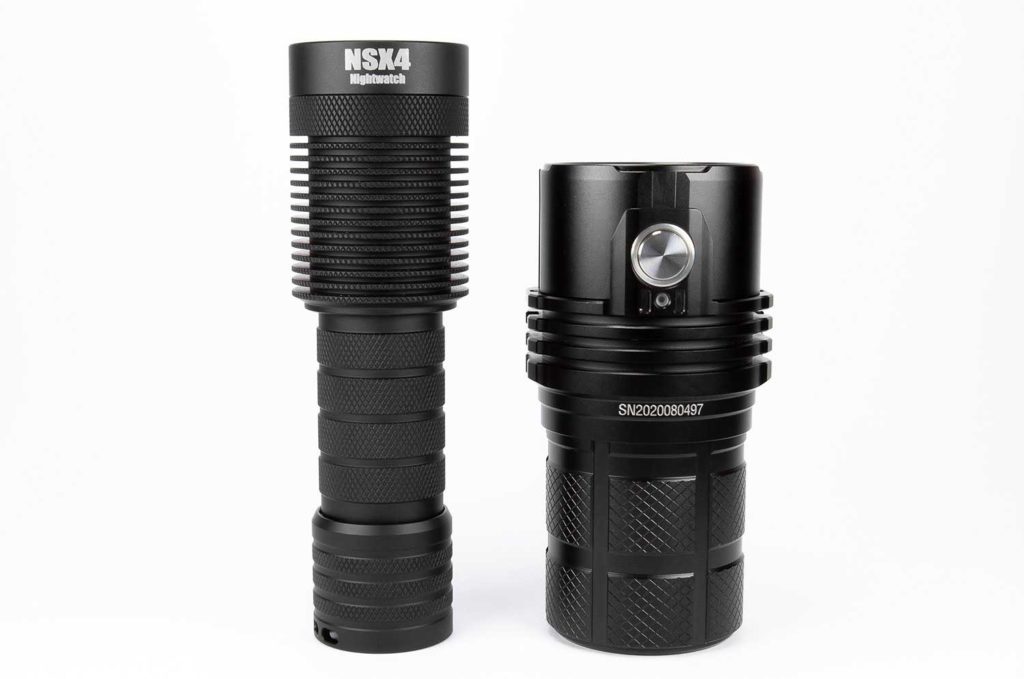
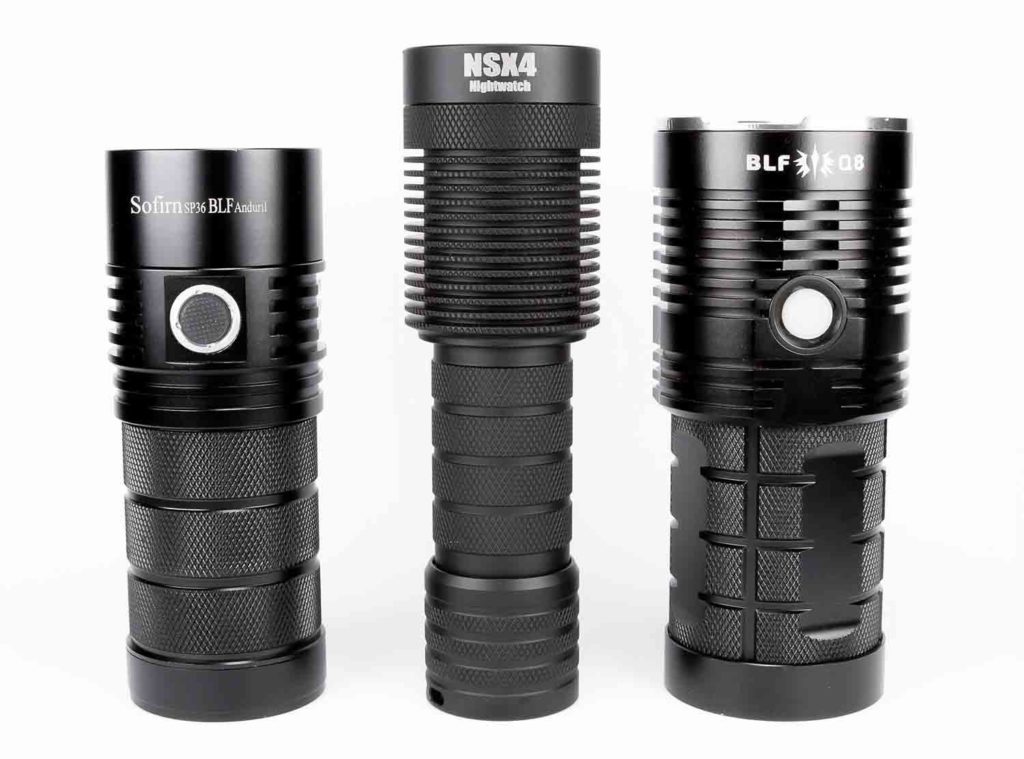
Driver & User Interface:
The driver itself is a Nightwatch-created one – it has a large slug of metal instead of a spring, and on the other side, appears to run multiple FETs.
Given that there was no user manual included in the box, all of this is from trial and error. It’s always fun to experiment to find new things!
The light has a mechanical switch, so it’s a fairly basic UI.
Modes:
From OFF:
- Single click: On to last-used mode
From ON:
- Single click: Off
- Tap: Change mode (Moon/L/M/H)
- Double-tap: Turbo
- Triple-tap: Strobe
Mode memory:
- As above, the light starts up in last-used mode.
Low voltage warning:
- At 3V, the emitters do a quick double-flash every five seconds to warn of low voltage.
Strobe/blinkies
- A single strobe mode, available by three taps from on. An interesting note – when strobing, the tailcap makes a little tapping noise at the frequency of the strobe.
Lock-out mode:
- Lockout is only available via unscrewing the tailcap slightly to break the electrical circuit.
PWM
- No PWM discernible by eye, or via camera. Lovely!
According to the item description on NealsGadgets, there is also temperature control; at 50 degrees C the light will thermally throttle.
Batteries & Charging
The NSX4 is primarily compatible with a 26800 cell, and is compatible with a 21700 via the included adapter.
The cell that I received is unbranded and apparently 7000mAh; it appears to be identical to this cell. It’s interesting that there’s two different capacities rated in the images and description (7000mAh in image, 5500mAh in text) – but after a full runtime test, charging it back up gave me 7206 mAh – so I’m going to side with the whole “7000mAh” rating.
A note that may be only relevant to the package I received – on the 26800, there was a slight concave on the positive terminal, which made charging it in the included adapter nigh-on-impossible; it would only charge when held in a very specific position. I countered this by soldering a blob onto the positive terminal of the charger to extend its reach, and now it charges happily without having to position it well.
Another interesting point is that the labels on the charger appear to be reversed – the FULL light glows red when charging, and the CHG light glows green when there’s no cell, or when the cell is finished charging. A simple image template swap for future versions will resolve this.
I’ve seen in other reviews of the NSX4 that people are using the 21700 adapter on the positive terminal of the 21700; I found that using it on the negative terminal made more sense, as the metal surface on the outside of the adapter is slightly concave and this seems to fit the tailcap spring nicely, as opposed to having a small contact area to the slug of metal on the driver. It does, however, mean that I need to hold the light emitters-up when putting the cell in, and effectively push the cell into the tube and then flip it over, as I don’t particularly want my cells banging down onto the driver.
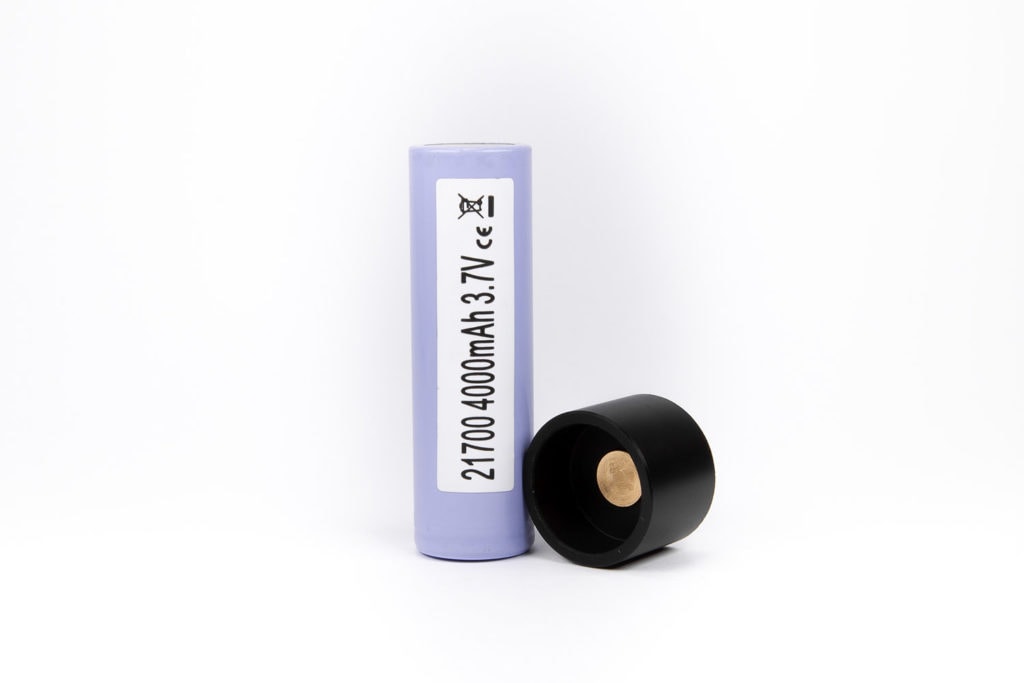
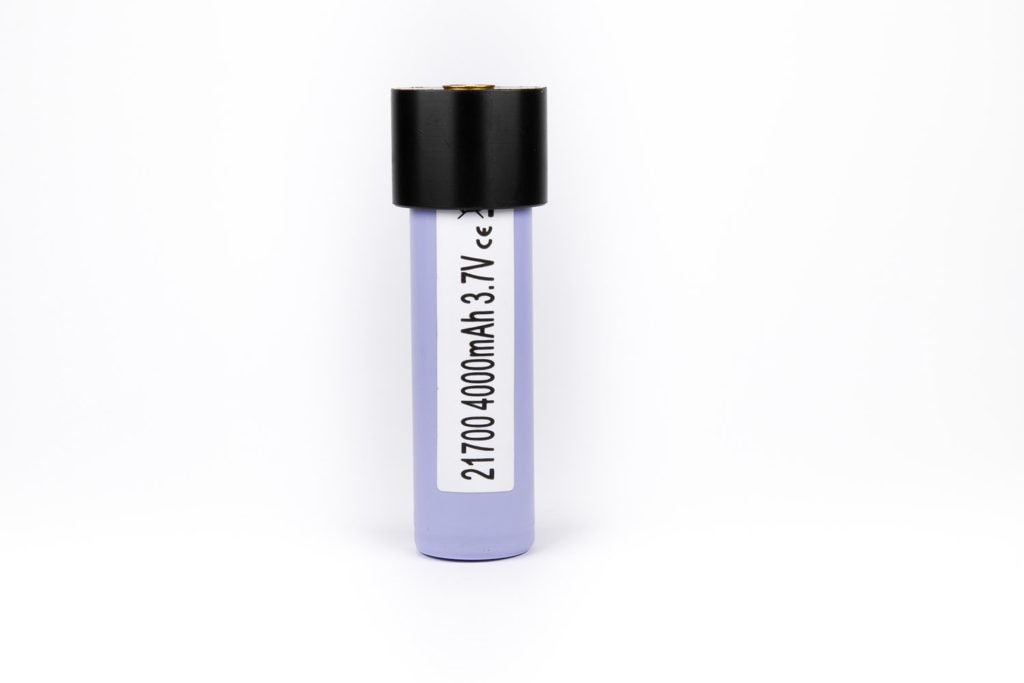
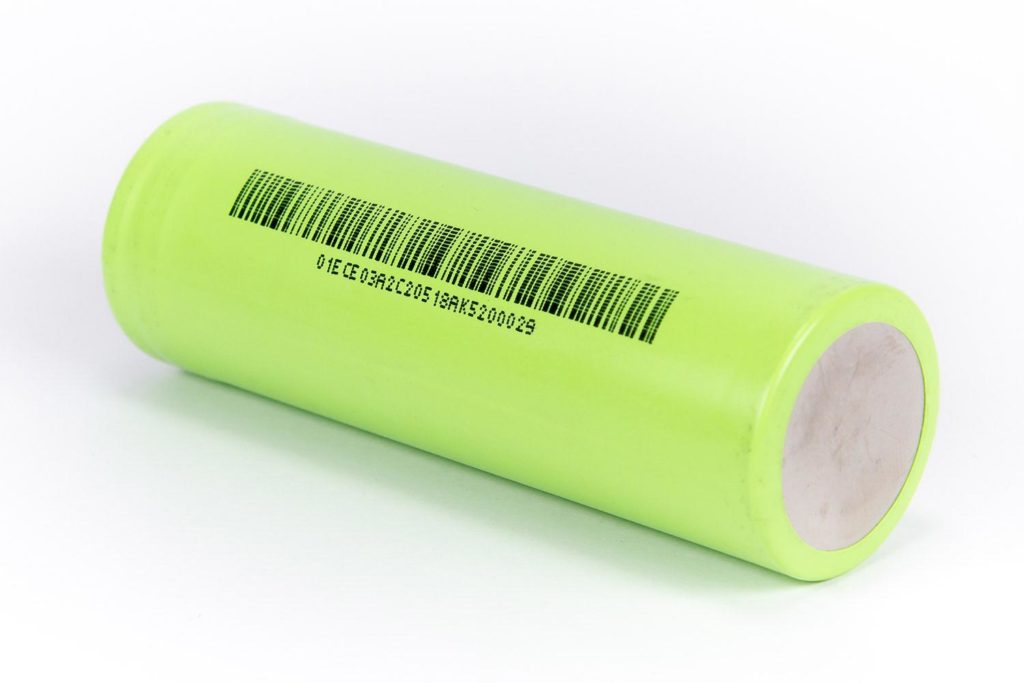
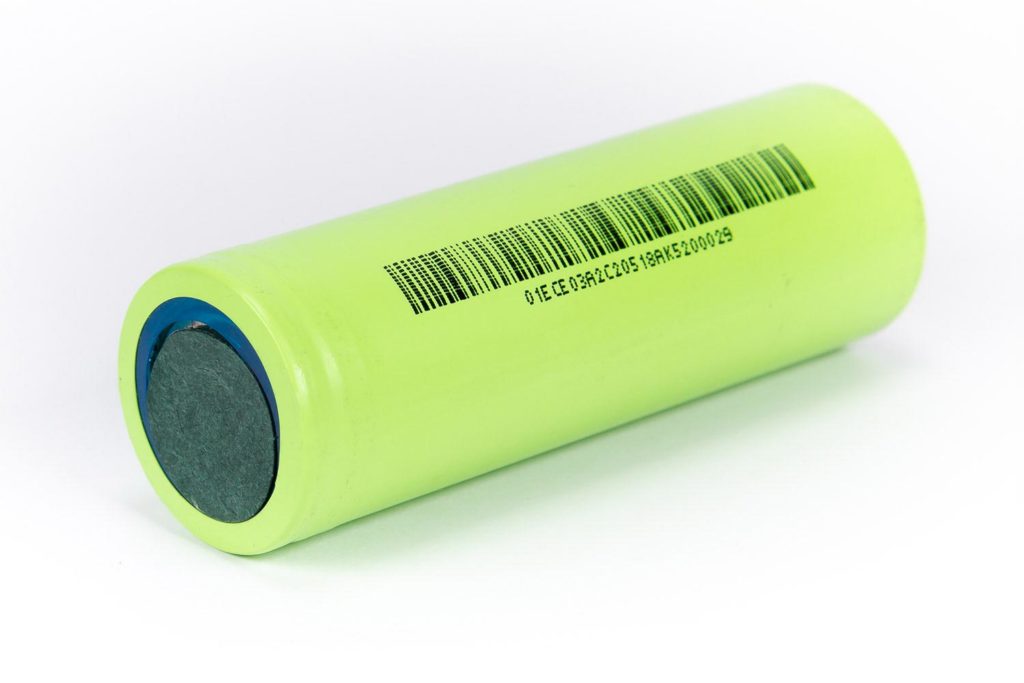
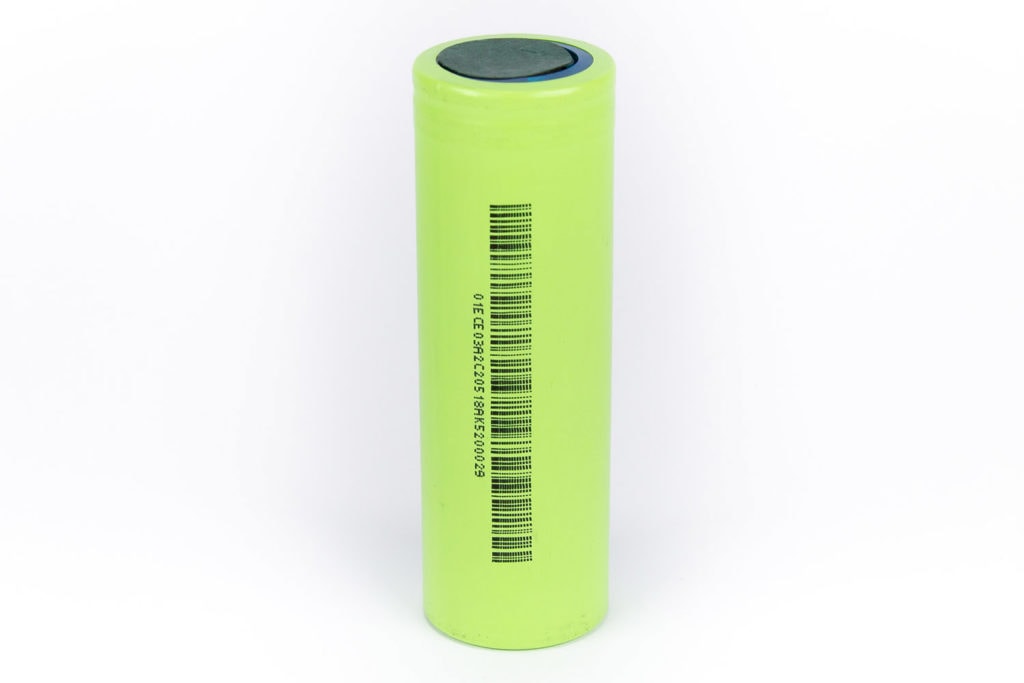
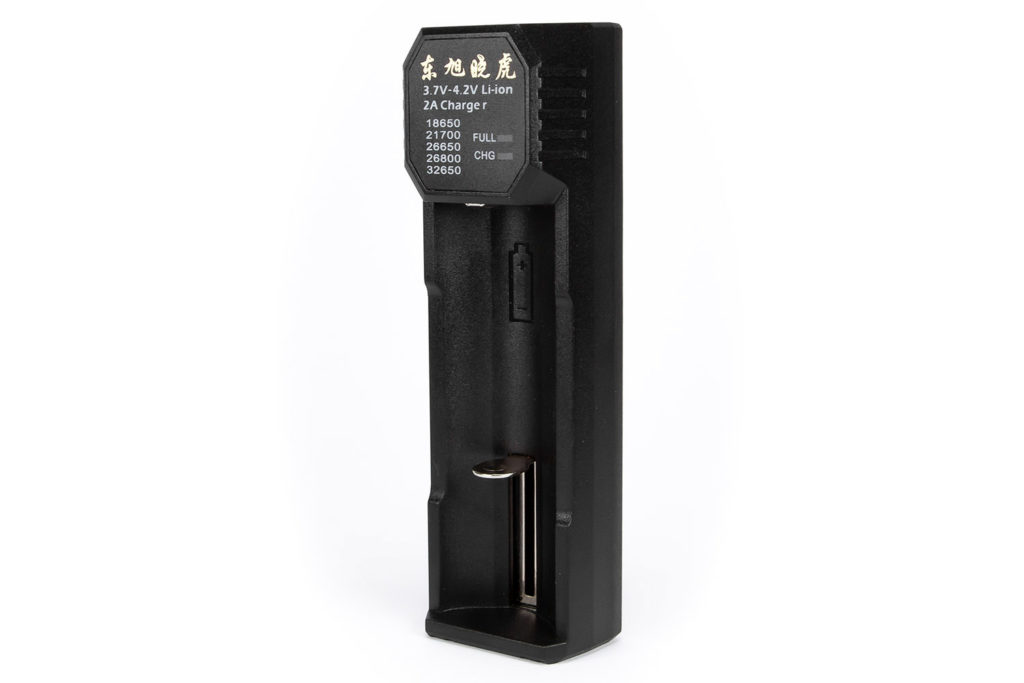
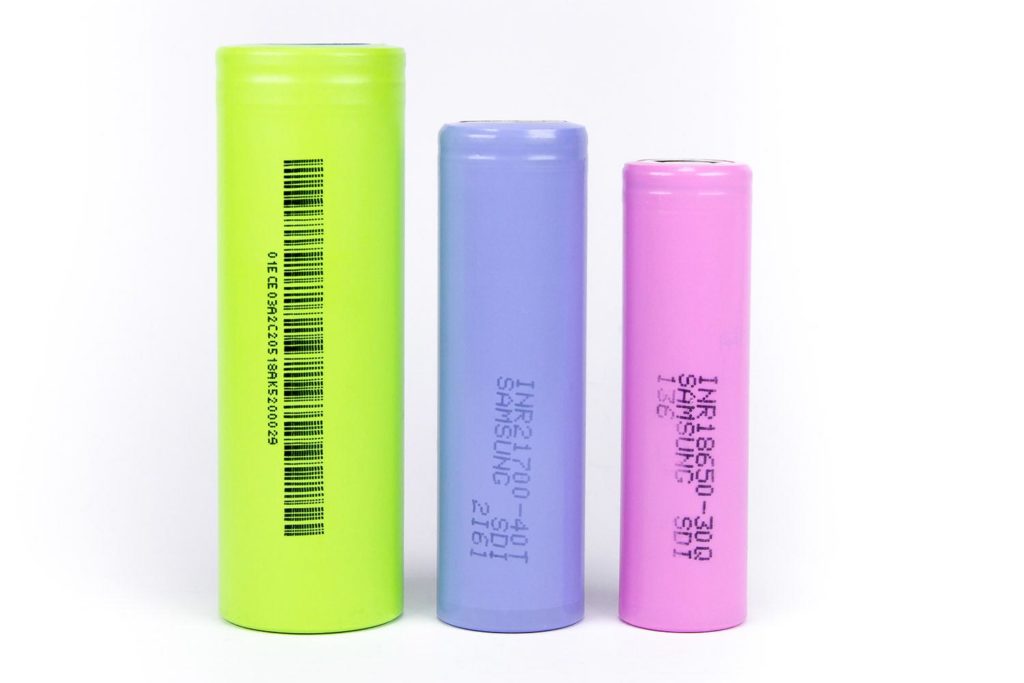
Performance
For my readings, I use the following:
Lux Meter: For lumen readings and runtimes, an Adafruit TSL2591 connected to a Raspberry Pi running Ubuntu, using RuTiTe by bmengineer in a custom sphere (build document coming soon, when I have some more time). A UNI-T UT383S is used for candela readings. An Adafruit MCP9808 rounds out the list for temperature monitoring.
DMM: UNI-T UT139C and UNI-T UT210E – 16AWG wire is used directly into the 139C via some banana plugs and 8AWG wire in a loop for the UNI-T. The DMM I use depends on how high the expected current will be – I use the 139C for <10A, and the 210E for >10A.
I’ve tested measurements on 26800, Samsung 40T, and Samsung 30T. Unless otherwise specified, results are for the 26800.
Amp measurement
- Low: 80 mA
- Medium 1: 1.3 A
- Medium 2: 2.7 A
- High: 5.7 A
- Turbo:
- 26800: 20.7 A
- 40T: 21.6 A
- 30T: 23.9 A
The first four modes actually all register almost identically across the batteries, but that’s no surprise – each of them is more than capable of big things. It’s when it comes to “let’s go to town” that the differences shine. That said, I was expecting somewhat more, given that the 30T is capable of 35A.
As an interesting point, the “sweet spot” for the SST40 is around 7.4A, where you start getting diminishing returns in terms of lumens per watt; that’d be 29.6 A, and we’re falling decently short of that.
Runtime graph
Let’s face it – this kind of light is made for smashing light out, not for long runtimes. Included are turbo runtimes for the 26800 cell, 40T, and 30T, just to illustrate a point.
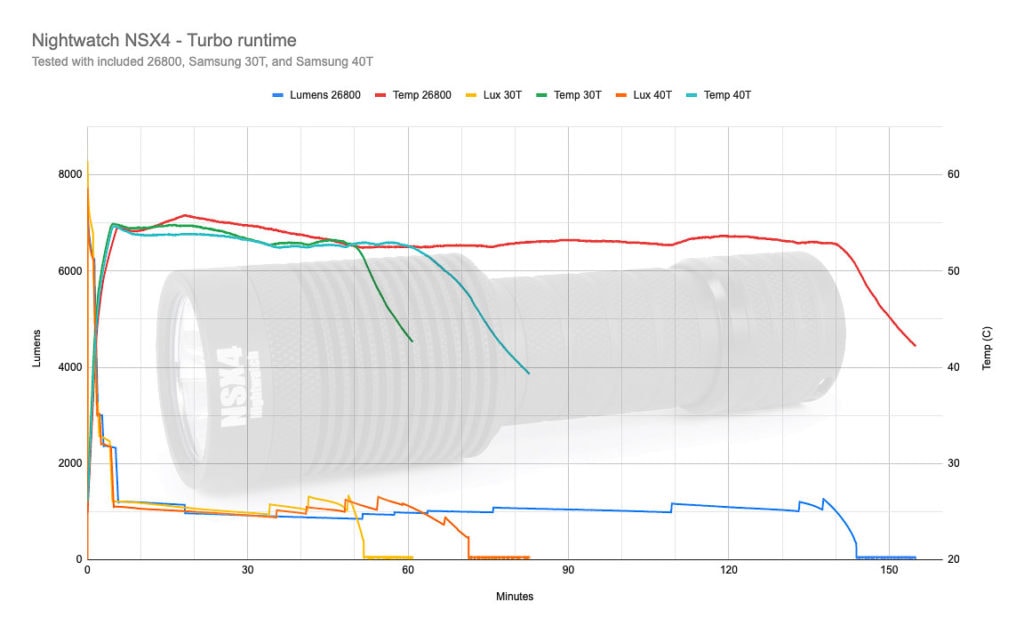
Immediately obvious is that the 26800 cell runtime is significantly longer than either the 30T or 40T – the stepdown times to the last drop before the almost-zero are:
- 26800: 143 minutes
- 40T: 71 minutes
- 30T: 51 minutes
The 21700s can’t hold a candle to the 26800 on runtime, which makes sense; we’re talking 3000 and 4000mAh vs a 7000mAh cell.
There’s the expected massive boost, then the thermal ramp-down, and I’m glad to see that there’s attempts to step the brightness up again as the temperature stabilises. It’s not a directly consistent pattern, but still nice to see.
Once the majority of the cell is drained, the light drops into an extremely low mode for some time before dropping to zero. So when your NSX4 gives out almost no light, it’s definitely time to change the battery.
Lumen measurements (for each mode)
Oooh, this is fun! Apart from some slight differences that may be more my measurements and having the light in a very slightly different spot than before, measurements were very similar until we move up to Turbo.
- Low: 32lm
- Medium 1: 633lm
- Medium 2: 1262lm
- High: 2542lm
- Turbo:
- 26800: 7606lm
- 40T: 7723lm
- 30T: 8285lm
That’s a pretty big jump from High to Turbo, but we are talking four times the current there. Also a big jump from Low to Medium – if it’s pitch black, your eyes better be ready.
Throw numbers:
- 5m indoors: 1936 lux = 48400cd = 440m
- 10m outdoors: 490 lux = 49000cd = 442.72m
I’m fairly satisfied with the consistency of results; it’s also slightly above what’s specified on the product page, which is nice to see.
Beamshots
Beamshots:
All modes are shown, including Turbo. There’s a dramatic difference in output from Low to Medium 1, but that’s to be expected when considering the measurements from above.
(1.3”, f20, ISO200, 24mm, WB 5000K)
Comparison shots:
NSX4 at Medium 1, Imalent MS06 at (2nd mode), BLF Q8 and Sofirn SP36 BLF at stepped mode 6. The spill on this thing is incredible compared to the SP36!
(0.5”, f22, ISO200, 24mm, WB 5000K – lights approx. 45cm from wall)
- Nightwatch NSX4 (SST40 6500K) vs Imalent MS06 (XHP70.2 6500K)
- Nightwatch NSX4 (SST40 6500K) vs Sofirn SP36 BLF (LH351D 5000K)
- Nightwatch NSX4 (SST40 6500K) vs BLF Q8 (modified, SST20 4000K)
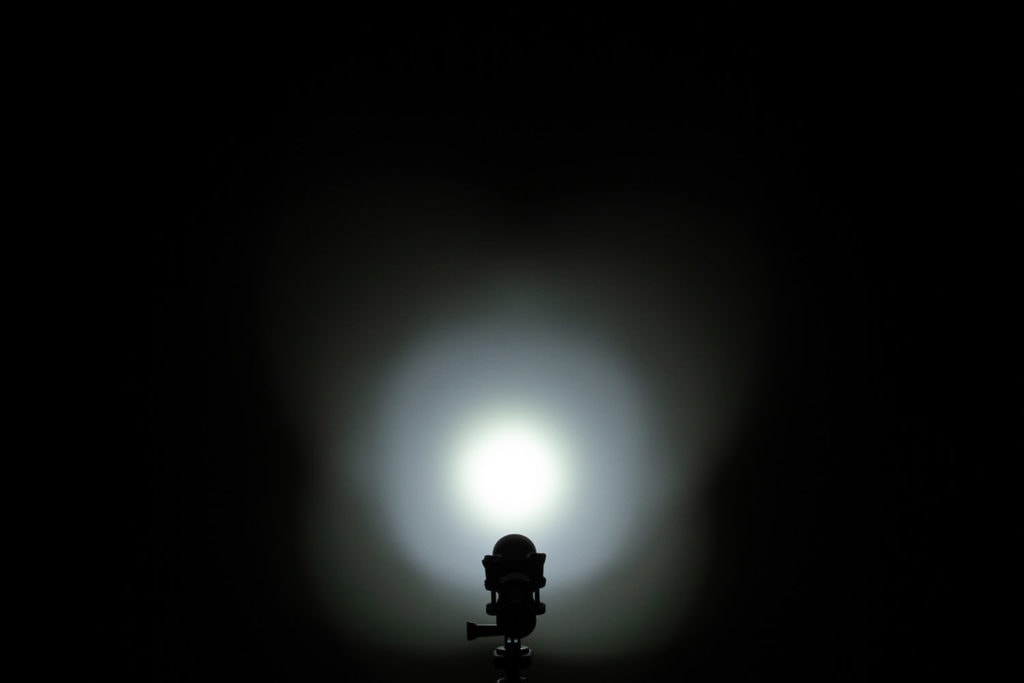
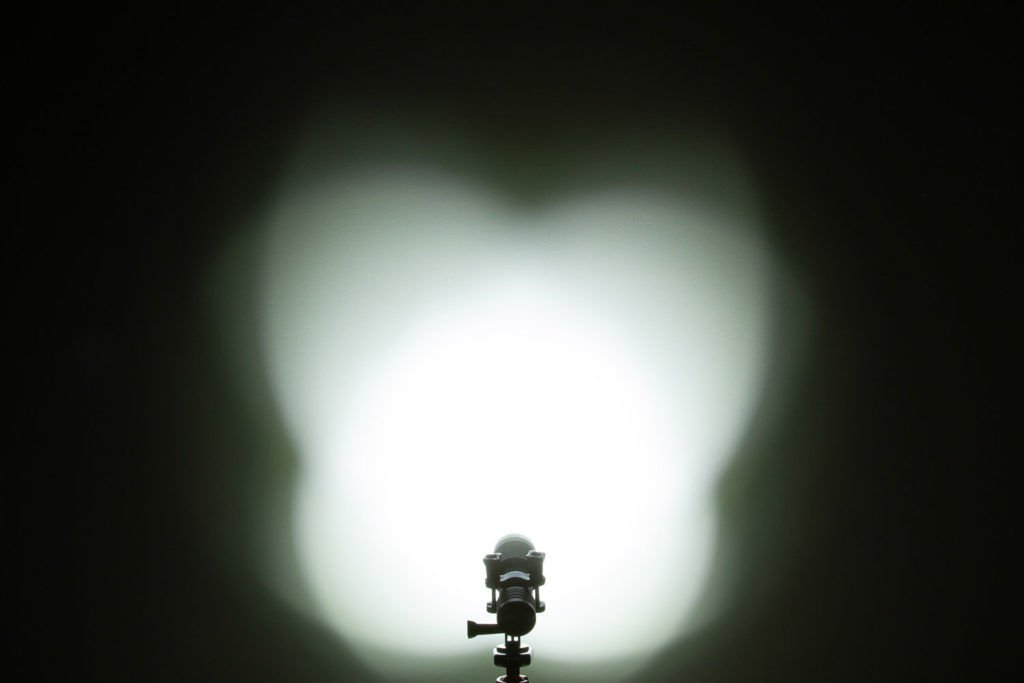
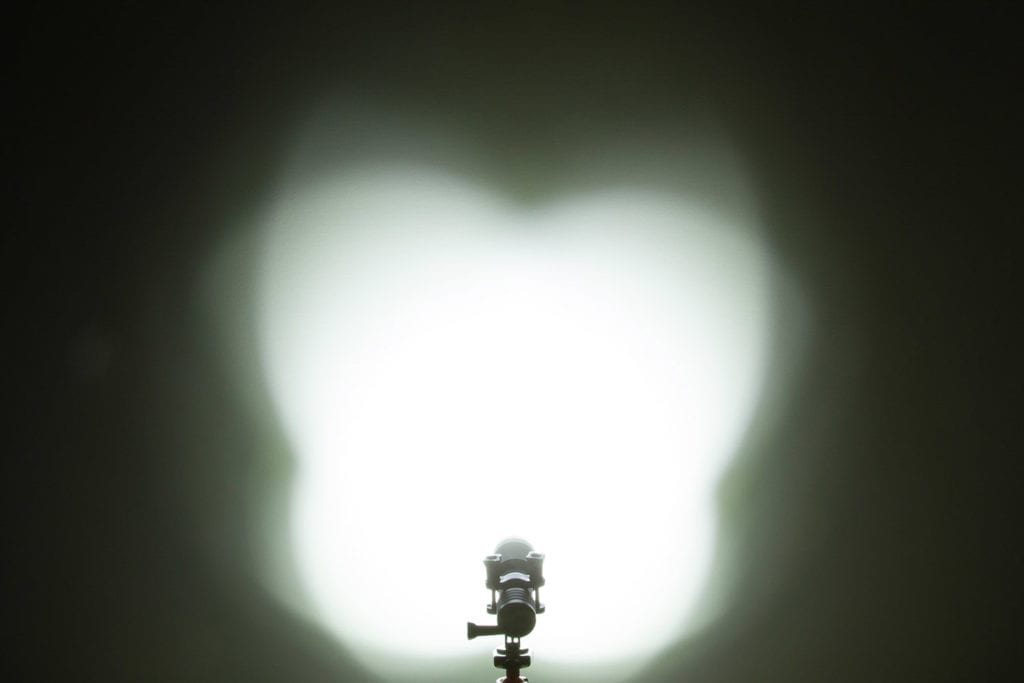
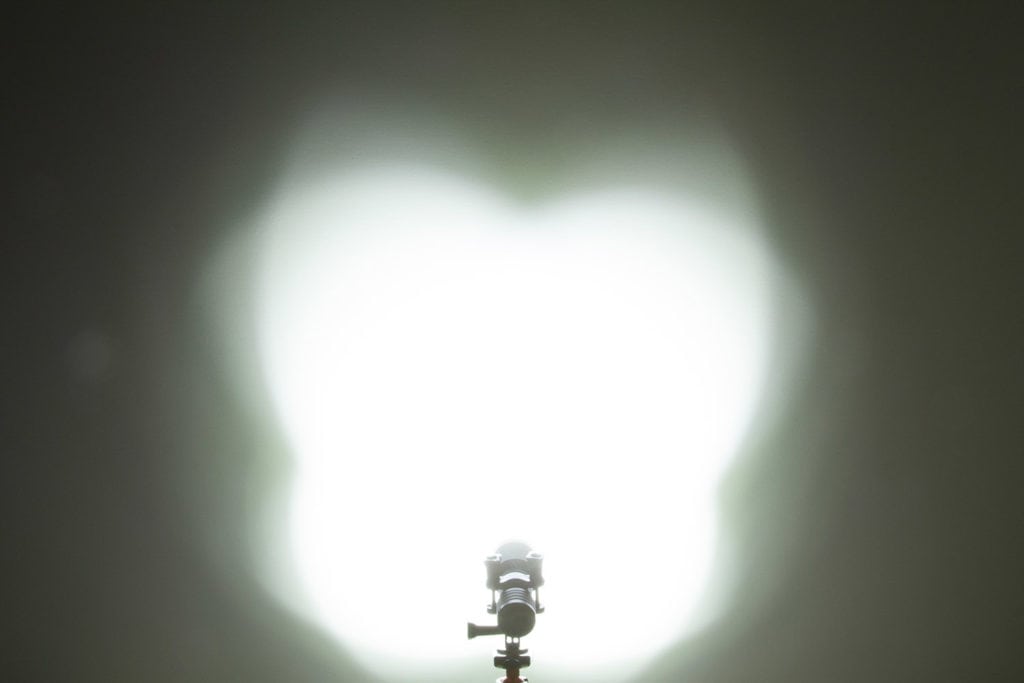
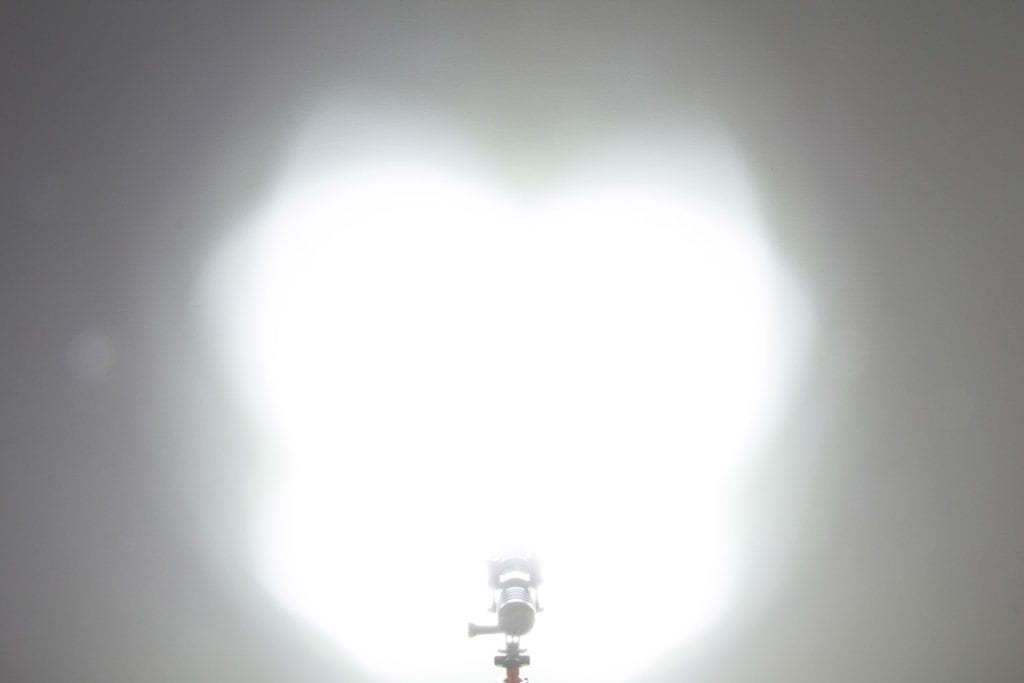
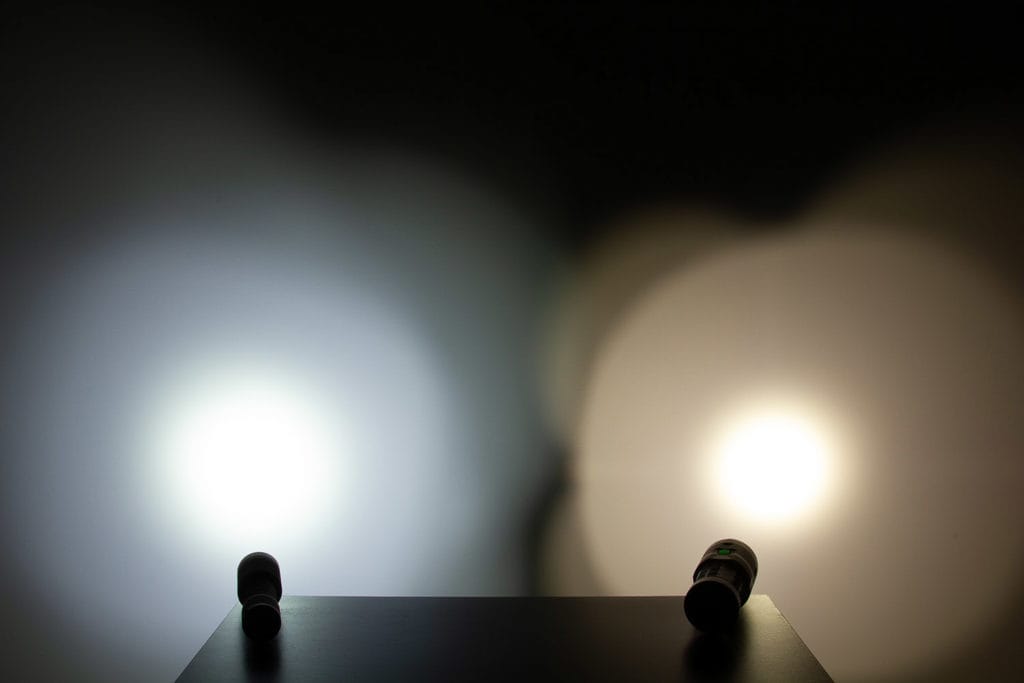
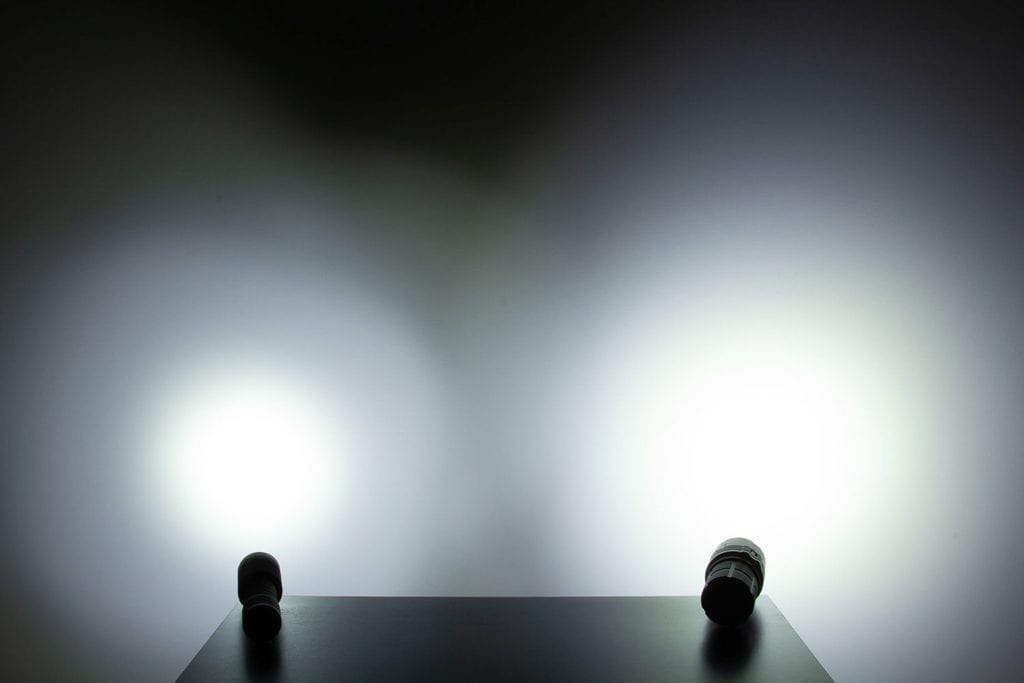
Disclaimer: This flashlight was sent to me for review at no cost, by Nealsgadgets. I have not been paid to review, nor have I been holding back on problems or defects.
OVERALL CONCLUSION
PROS
- One of the most solid lights I’ve ever held
- Feels great to hold; no sharp edges
- Puts out a lot of light without getting excessively hot
Cons
- Cool white (personal preference, though)
- Very small throw between half-press and full-press of tail switch

4 stars: ★★★★
I like it. I really do. I thought I was done with SST40 lights, but this is making a liar of me. Is it a bit cold and some green tint at low? Sure. Is it a very well put-together light with excellent heat sinking? Also yes.
I think the only things I’d change about this light would be to have a warmer CCT, replace the tail switch for a larger throw between half and full activation, and perhaps a few mm longer reflector for a bit more throw.
That said, the point of the light is lots of lumens and to put them everywhere, so the first and third point in that last paragraph are moot – but the second point is critical. The tail switch is just a bit too sensitive for me.
I give the Nightwatch NSX4 four stars – if the switch were replaced so I don’t turn the light off half the time I want to change modes, I’d very happily bump that up.
Flashlight for sale
Not for sale anymore. Instead, check out some of the following articles:
- Buyers guide: brightest flashlight
- Review: Nightwatch NI03S
1lumen selects and reviews products personally. We may earn affiliate commissions through our links, which help support our testing.